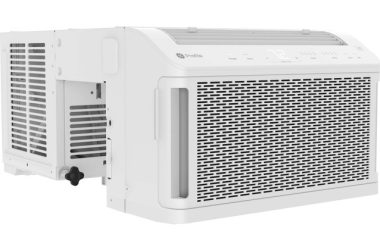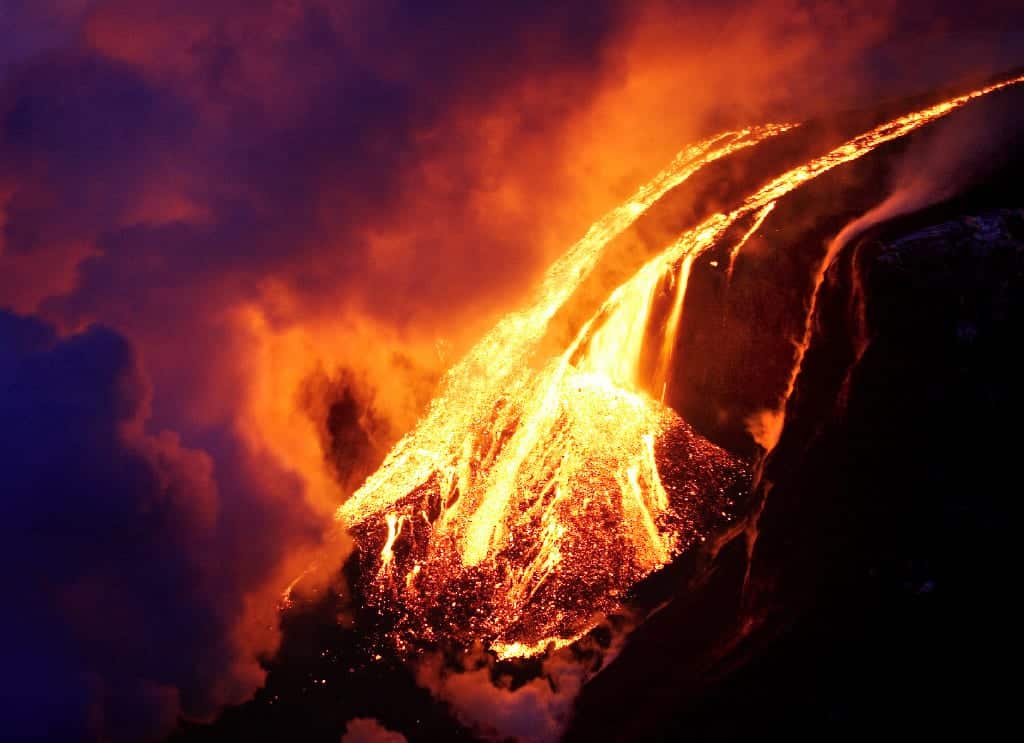A volcano is a vent in the earth which gases and molten rock (melted rock, otherwise known as magma) are forced through up onto the surface of the earth, due to high pressure.
Magma is molten rock below the surface of the earth, and lava is what magma is called after it erupts onto (above) the surface of the earth. The terms below and above are bold to emphasize the importance of the molten rock’s location.

The volcanic mountains observed (which people usually refer to as volcanoes) are actually cooled lava and ash which came from past eruptions. Lava becomes solid rock when cooled. Lava is molten (melted) rock.
Over extended time periods, each successive eruption deposits more lava on top of the existing rock, and then it cools as well. So with each eruption, another layer of rock is deposited on top of the old one and cools until a mountain is formed.
Simply put: Lava keeps flowing out, cools to become solid rock, and then that same process is repeated later on top of that rock until it becomes a mountain.



Volcanic Hazards
There are multiple volcanic hazards, some of which may surprise you, such as:
- Volcanic Ash: This consists of very hard and abrasive fragments of volcanic glass, minerals, and rock which can cause lung cancer and choking. These fragments are less than 2mm in diameter. As you would expect, the smallest ash particles travel and fall the furthest distance from the erupting volcano, and the largest ones fall nearest to the volcano due to their heavier weight. Source.
- Sulfur Dioxide (SO2) and Carbon Monoxide (CO): These substances are highly toxic.
- Lava: Lava is 700 (1,292 °F) to 1,600 °C (2,912 °F) [Source]. It is therefore hot enough to kill you if you get your foot stuck in it, for example. Large scale lava flows can wipe out an entire village, not only because it will burn it, but it is also extremely heavy and viscous (dense and syrupy).





